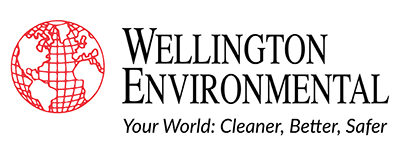CMS considers making hospital inspection outcomes public
The Centers for Medicare & Medicaid Services (CMS) is threatening to make hospital inspection results by accreditation providers such as The Joint Commission, DNV, CIHQ and Healthcare Facilities Accreditation Program public so that patients can see potential violations prior to choosing a hospital.
CMS submitted a survey and certification letter, dated April 16, 2017, announcing the intention to publish proposed changes that will require posting of provider/supplier survey reports and plans of corrections.
CMS is stating that the accreditation agencies are not uncovering as many health care violations as government inspectors are finding. Therefore, publishing the inspection data is on the agenda from CMS and health care providers are lobbying hard to keep this from happening. To combat the initiative on the hospital front, accreditation agencies are stepping up with more aggressive inspections to compete with the government inspections. The goal now is to make sure accreditation agency inspections are as thorough and aggressive as state agency inspections. Hospitals are caught in the crosshairs and are now being squeezed by both state inspectors and their accreditation inspectors.
Currently, CMS inspection results are fairly difficult to obtain, requiring a trip to a CMS regional office or a state survey agency to inspect the documents. In addition, accreditation organizations are not required to make their survey reports and plans of correction available to the public.
Part of the emphasis is on making health care more transparent for consumers. CMS has leverage over hospitals by threatening to publicize inspection reports. Consumers are beginning to take a closer look at hospital performance when making a decision on where to have procedures performed. To slow down the CMS plan to make accreditation inspections and hospital correction plans public, hospitals are turning to lobbyists to build political roadblocks. Generally, hospitals do not want additional public scrutiny even though they are aggressively focusing on quality improvement initiatives.
Both government and private accreditation reports detail what went wrong in a hospital, but do not identify patients or specific staff members. The reports detail clinical, surgical and the overall environment among other focuses. CMS is intending to make “all” inspection information public, unlike current public disclosures by accreditation agencies. Currently, private agencies disclose limited information.
“We believe it is important to continue to lead the effort to make information regarding a health care facility’s compliance with health and safety requirements” publicly available, CMS officials wrote in a public statement.
Not all is doom and gloom. Some hospitals are doing just fine with both government and private inspection results. After initial problems at Detroit Medical Center (DMC), CMS performed a surprise inspection along with the Michigan Department of Licensing and Regulatory Affairs and reported DMC was in full compliance. Passing the surprise inspection assured DMC of remaining in the Medicare program which provides millions in federal and state funds. The hospital system took corrective action and passed with flying colors. CMS is an important aspect of financial survival and many hospitals are doing just fine.
CMS hopes the proposed rules will resolve the inconsistency of some inspections being made public while others are not. The American Hospital Association is straddling the fence on keeping its hospital members happy as well as CMS and you can understand why. Hospitals need the AHA political efforts and guidance plus the CMS payments. The AHA mentioned that releasing the reporting data can be difficult for consumers to read and that they may benefit from summaries rather than clinical details.
There are a few hospitals that are using a different marketing approach, attempting to promote outcomes that differentiate them from other hospitals. The marketing approach might satisfy the public’s need for reviewing publicly released hospital information by driving the importance of specialized staff. Radio ads touting Mount Sinai’s skills vs. a fictitious competitor tell a story of a negative outcome vs. a positive outcome at Mount Sinai. The comparison stories are powerful and effective at positioning Mount Sinai in a prospective patient’s mind when making a critical hospital choice. Health systems may end up turning to marketing specialists to create a public image rather than letting the government control the message.
Along with The Affordable Care Act and whatever new health care legislation develops, quality improvement will be the focus and transparency will follow. Payers such as the government and private health care insurers want efficiency as well as improved outcomes. Health care associated infections (HAIs) will always be part of the main focus due to two important factors: HAIs are mostly preventable; and there is a potential savings of $30 billion a year.
The CMS efforts to release inspection and correction reports are intended to make inspection information public and apply leverage on accreditation agencies. The government contends hospitals will pay the initial price, but the public will benefit in the long run.




